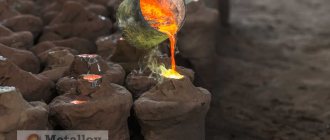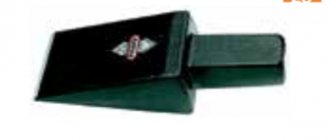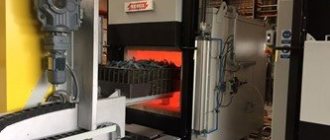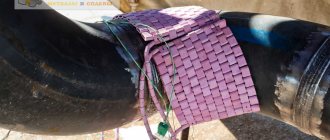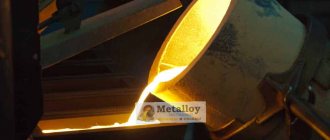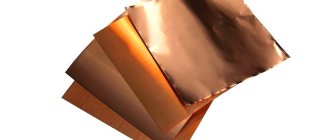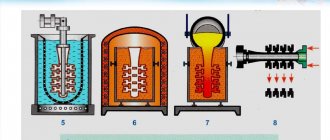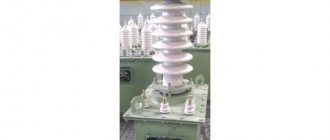To view the video, you need a modern browser that supports HTML5 video.
The first products produced by the foundry method helped people in vital matters: protection from enemies, hunting, cooking, home improvement. But when people provided themselves with “daily bread,” they were drawn to beauty - a desire arose to diversify their life, to fill it with beautiful things.
In this they were helped by decorative metal casting, the technology of which, according to the most conservative estimates, dates back thousands of years. Today, the production of cast figured products is one of the most complex and exclusive types of metalworking.
Figure casting - from antiquity to the present day
If people made the first castings for “utilitarian” purposes approximately 7-8 thousand years ago, products with artistic properties found by archaeologists are dated back to 2-3 thousand years, and they were discovered in China.
Small figurines and sculptures became “pilot” samples of figured metal casting. In Russia, foundry was actively used in the construction of churches, in particular, in the casting of bells, as well as for military purposes - for the production of cannons. Today, artistic metal casting, not forgetting the achievements of ancient masters, is based on modern technologies, greatly reducing the labor intensity of the process. Innovations in this area are developing in two directions: improving equipment and technologies and creating alloys that make it easier to produce castings.
Copper alloys
Alloys have different contents of tin and copper. A typical modern bronze contains 88% copper and 12% tin. There is alpha bronze. It contains an alpha-solid mixture of tin in copper. Such alloys are used for minting coins and mechanical parts.
History shows that when making their masterpieces, craftsmen included other metals in the solution with copper. Excellent connections were made. The bronze sculptures in the photo, which are presented in the article, are admirable.
For example, the Gloucester candlestick. The bronze mixture is filled with zinc, tin, lead, nickel, antimony, arsenic, iron and a fairly hefty amount of silver. Most likely, the candlestick was made from ancient coins.
In the distant Bronze Age, different types of bronze were used to prepare products:
- Classic - 10% tin, slatted weapons were made.
- Moderate - 6% tin, sheets were rolled out of ingots, armor and helmets were forged.
- Sculptural bronze - 90% copper and 10% tin, is used to this day to create masterpieces.
Bronze is the most important material along with marble. But bronze is used to make more masculine works that convey strength and energy.
Features of artistic casting
Artistic metal casting to order, like the production of cast parts, is based on such material properties as the ability to melt and flow.
The molten metal is poured into the model, which has a recess with the necessary relief, and completely takes its shape. To obtain products with a decorative effect, lost wax casting is most often used. First, the model itself (matrix) is made, which is usually made from wax, plastic and other plastic materials. Then it is coated with a special fire-resistant compound, which completely repeats the shape of the internal cavity.
Next, the process of melting the source material from the shell occurs, as a result of which only it remains - in the form of a kind of hollow structure. For artistic casting from bronze, brass and other raw materials, this shell is filled with molten metal, cooled naturally, and then the fireproof casing is destroyed to obtain the finished product.
History of technology
According to historians, the bronze casting is 12 thousand years old. Initially, using this technology, jewelry and simple tools were made from bronze. Over time, this technology has been improved, and today it is a method by which many unique products are created from this alloy.
The current level of development of bronze casting makes it possible to produce various objects from this copper alloy not only in production, but also at home. Thanks to the invention of bronze, as well as the development of its processing technologies, the main of which is casting, we can still enjoy the sight of works of art that were created by masters back in the Middle Ages and ancient times.
Antique bronze set of writing instruments
Bronze casting, as well as brass casting, another alloy based on copper, gained the greatest popularity in the era of classicism and European Baroque. It was in those days that people learned to use these materials to create unique interior elements and decor.
Such alloys created on the basis of copper are still actively used in the manufacture of:
- items used for interior decoration;
- gates and fences that perform not only a decorative, but also a protective function;
- sculptural compositions and souvenirs;
- bas-reliefs and design elements of lighting fixtures - chandeliers and sconces;
- elements of staircase structures and entrance groups.
Bronze casting for making knife handles
Many of these products, which are not large in size or complex in shape, can be made from bronze and brass not only in production, but also at home.
Materials for decorative casting
In the foundry business, materials in their pure form are quite rare: firstly, products made from them are very expensive, and secondly, the raw materials themselves do not have the necessary indicators of strength, durability, etc. Therefore, finishing castings are often made from metals such as lead, tin and zinc, and they themselves have a narrow specificity of use.
Gray cast iron is considered one of the leading alloys for the production of artistic castings. When phosphorus is added, the fluidity of the material increases significantly, and it fills the mold 100%, down to the smallest contours of the relief. The disadvantage of this cast iron for figured metal casting is its excessive fragility. But since the product will most likely simply be admired, this does not matter much.
Artistic bronze casting is no less popular: customers are attracted by the aesthetic properties of the metal, its “sunshine” and positivity. Well, foundry specialists value it for such advantages as:
- increased fluidity,
- very slight shrinkage
- upon hardening - an even, homogeneous structure without the formation of pores,
- rust resistance,
- elasticity,
- if it is necessary to create prefabricated structures - good weldability.
Basic properties
For a master sculptor, bronze is a substance that guarantees the durability of his work. Despite different weather conditions, bronze sculptures have been preserved for several centuries, which emphasizes its value:
- As they oxidize, the sculptures become covered with a thin coating called patina and acquire a color ranging from greenish to black.
- Bronze is interesting because it is an aesthetic material. All bronze figurines, sculptures, figurines are yellow-red or yellow-green. Products made from this material lend themselves well to tinting, gilding and polishing.
- Bronze alloys are not a cheap material; coins were minted from it, and jewelers made jewelry from it.
Bronze is not a pure metal, but contains impurities. There are many different bronze alloys.
Method of earth casting for the production of decorative castings
To create decorative metal castings, a simpler technology is used than lost wax models: casting into the ground (sand, sand-clay and other forms). In this case, an imprint is formed on the mixture, and then gating channels are made in it, which will allow the molten metal to pass through. This technique is characterized by its simplicity, low cost and the ability to create large and voluminous things. But still, it is inferior in quality to work with lost wax models.
Art casting to order
Do you want to fill your life with beautiful and comfortable things? Or maybe you are looking for an unforgettable gift for a loved one? Our specialists will develop an individual project for you and produce unique products in the shortest possible time:
- decorative grilles,
- furniture fittings,
- plumbing elements,
- office supplies,
- serving items,
- awards,
- souvenirs and much more.
We work from ready-made drawings and drawings or we can create them ourselves.
Do you have ideas but can't put them on paper or in a computer program? Describe your wishes to the artist - and he will develop original sketches for you, and then create a model of the future product in 3D format. Advantages of working with us:
- high precision and detail of products,
- exceptionally high-quality raw materials for production,
- prices are moderate even for exclusive projects.
We are waiting for your orders!
Toning, patination and oxidation
Thanks to a certain chemical treatment, a colored protective coating is formed on the surface of the bronze product. If the bronze figurine is small, then it is dipped into a container with the solution in full. Large sculptures must be carefully treated with a brush, foam rubber and sponge. To secure the film to the product and to prevent plaque from forming on it, after washing and drying procedures, rub it with a rag soaked in drying oil.
Now bronze products are returning to their popularity. Nowadays you can find masterfully made figurines and figurines that convey the mood and every little detail. They may well become part of a beautiful interior.
Sand casting
Sand casting is the most common and cheapest casting method. The initial stage of this method is the production of a casting model. Previously, it was made of wood, but in modern production plastic molds are made. The model is filled with a special mixture of sand and binder, which is compacted by pressing. Casting is carried out by pouring the melt into the formed cavities through special holes. After cooling, the mold is broken and removed, and then it must undergo processing.
In modern production, sand casting technology is carried out using vacuum molds that are filled with sand. To obtain the shape, a metal flask is used, which consists of two bottomless boxes, which are filled with sand and compacted. An imprint of the future model corresponding to the shape of the casting is taken on the surface of the connector. By connecting two molds, the melt is poured.
Chill casting
This is the highest quality method of casting, which is carried out using a collapsible metal mold. After hardening, the chill mold is reused. But this is done after it is cleaned. The peculiarity of this method is that the solidification of the liquid melt occurs without any external influence. The products obtained in this way have a fine-grained, dense structure, ensuring tightness and good mechanical properties.
Chills are used to produce castings from various alloys, most often aluminum and magnesium, which have a low melting point. In this case, one mold can be used up to 1000 times. Chill casting is a very effective method for mass production of parts, which is the reason for its use in up to 45% of products.
Injection molding
This method guarantees a high quality surface, which then does not have to be machined. It is very productive for producing parts of various configurations, weighing from several grams to tens of kg.
Injection molding allows you to produce complex parts with curved surfaces and various channels. In this case, zinc, magnesium, brass and aluminum castings are most often used.
LPD technology has many advantages:
- low price;
- casting accuracy in size and configuration;
- Many castings are produced from one mold.
But this technology also has a number of disadvantages: the duration of the process, the high cost of producing molds, difficulties in obtaining castings containing hidden cavities, as well as the possibility of gas holes and shrinkage cracks appearing in the workpieces.
For the production of aluminum castings in LPDs, special equipment is used, equipped with a cold horizontal chamber designed for pressing the material, and semi-automatic machines for casting zinc alloys with a hot chamber for pressing the material and with a locking force.
Materials used
Throughout history, man has used various metals for artistic casting. Initially, the main metal compounds for decorative casting were alloys in which copper predominated. Since the 19th century, compounds with a predominance of zinc and lead began to be used. Cast iron artistic casting appeared a little later. Currently, stainless steel and aluminum are used in this process.
Gray cast iron
In addition to the use of iron and bronze in artistic casting and the manufacture of various objects, cast iron has become very popular. Cannons, cannonballs, monuments, and fountains were made from it. However, in the development of decorative trends in metalworking, cast iron gained popularity only in the second half of the 19th century.
The most common alloy for making sculptures was gray cast iron. It had the following advantages:
- Good fluidity due to the addition of phosphorus.
- Low material cost.
- Attractive appearance.
However, phosphorus made the metal more brittle.
Casting using gasified models
LGM technology is the most profitable solution in terms of efficiency, environmental friendliness and high quality of the resulting shaped castings. This method is increasingly being introduced in global production, and it is especially popular in the USA and China. First, a copy of the model is made from foam plastic, which is placed in a sand mold. In this way, castings weighing up to 2 tons or more, with sizes ranging from 40 to 1000 mm, are produced.
This method is actively used in engine building to produce cylinder heads, individual blocks and other parts. At the same time, for a suitable casting weighing 100 kg, several types of non-metallic materials are consumed, intended for the formation of mold models:
- Non-stick coating – up to 25 kg;
- Quartz sand – 50kg;
- Expanded polystyrene – 6kg;
- Polyethylene film - about 10 sq.m.
In this case, molding consists of filling the model with a sand composition, with the possibility of its reuse in 95-97% of cases.
Shell casting
The shell mold casting method makes it possible to obtain shaped aluminum castings from metal alloys by filling them with a mixture of sand grains (mainly quartz) and synthetic powder (pulver-bakelite and phenol-formaldehyde resin).
The shell form is obtained by pouring it onto a metal model heated to 300 °C and holding it until a hardened thin layer is formed. After this, the excess mixture is removed. If a clad mixture is used, it is blown into the gap formed between the outer contour plate and the heated model.
In both the first and second cases, it is necessary to wait for the shell to harden on the model in the oven. The next stage is the fastening of the resulting half-forms, their placement in a metal case and pouring of the melt. This method is used to cast aluminum castings weighing up to 25 kg. The advantages of this technique are control over the thermal cooling conditions of workpieces, the possibility of mechanizing the process and increasing productivity.
Centrifugal casting
Centrifugal casting is used to produce parts with the shape of a rotating body made of cast iron, aluminum, steel and bronze. The melt is poured into a metal mold, which rotates at speeds of up to 3000 rpm.
Due to centrifugal force, the melt is evenly distributed inside the mold, and after crystallization, a casting is formed. This method makes it possible to obtain two-layer workpieces consisting of various alloys. The casting obtained in this way has a high density and good physical and mechanical properties.
The big advantage of centrifugal casting is the possibility of forming internal cavities without the need to use rods, as well as saving alloy due to the absence of a gating system. This method produces up to 95% of suitable products.
The production process uses equipment equipped with horizontal axes of rotation. The centrifugal casting method is widely used to produce castings of sleeves, bushings and other parts with the shape of a rotating body.
Metal casting
Metal casting is a production process based on the technology of pouring molten, hot metal into special molds, as a result of which cast blanks are obtained - castings. The cavity of the molds repeats the configuration of future workpieces and represents the working part of the casting mold, where the liquid metal enters. Here, future workpieces are cooled, hardened and given the appearance of the final product. Before delivery to the consumer, aluminum castings undergo mechanical processing (turning, milling, grinding and polishing).
This method is used to produce aluminum castings, which, due to their unique chemical properties, are used in many fields: in instrument making, construction, automotive, furniture production (fittings and decorative parts), etc. To obtain them, various technologies are used, the choice of which depends on sizes, configuration and other indicators required from the final product.
